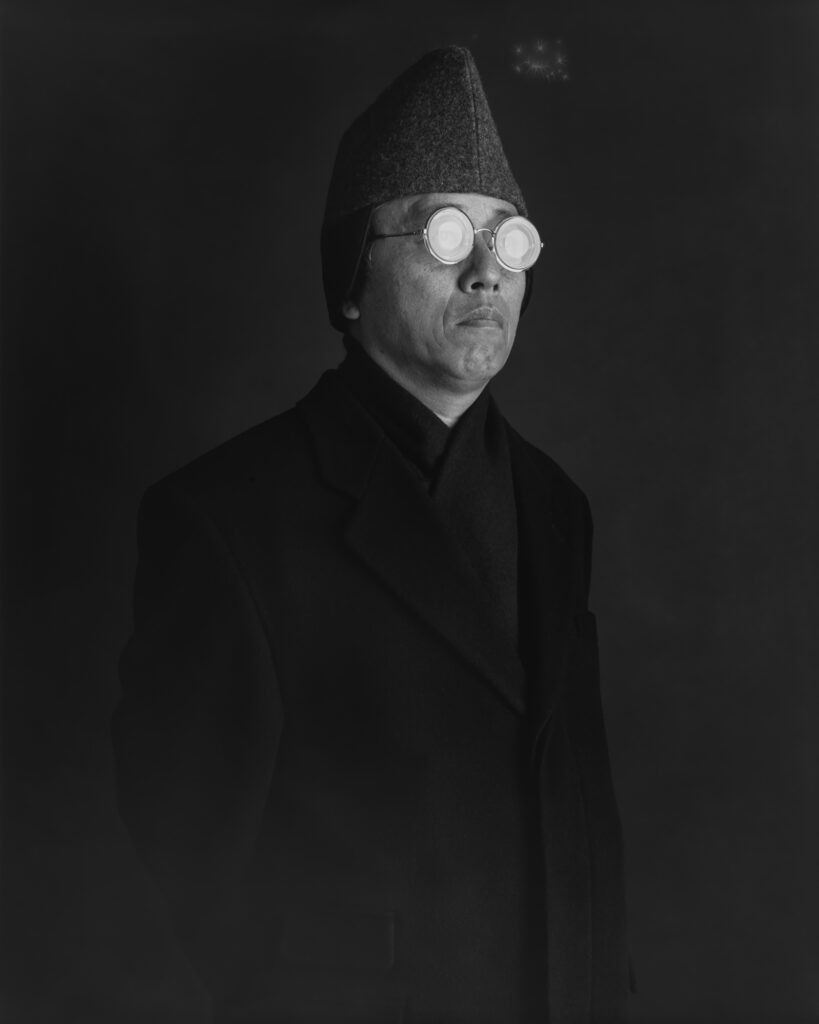Hiroshi Sugimoto
Japanese
1948, Tokyo, Tokyo prefecture

Hiroshi Sugimoto, Distorted Universal Vision (Self-Portrait), 2003; © Hiroshi Sugimoto, courtesy Fraenkel Gallery, San Francisco
Japanese
1948, Tokyo, Tokyo prefecture

Hiroshi Sugimoto, Distorted Universal Vision (Self-Portrait), 2003; © Hiroshi Sugimoto, courtesy Fraenkel Gallery, San Francisco
Known for his long-exposure photographic series of empty movie theaters and drive-ins, seascapes, museum dioramas, and waxworks, Hiroshi Sugimoto has been investigating the nature of time for nearly thirty years.
Born in postwar Tokyo, Sugimoto's interest in art began at an early age. He had already been deeply influenced by Surrealist thinkers and writers such as André Breton and Marcel Duchamp when he moved to Los Angeles to study photography at the Art Center College of Design.
In 1976 Sugimoto returned to New York City, where he spent the following two decades exploring the potential of his chosen medium — the suspended moment of the photograph — to distort the perception of time and memory. In the 1990s Sugimoto produced a series of intentionally blurry, large-format photographs of iconic works of 20th-century architecture, including the Empire State Building and Le Corbusier's chapel at Ronchamp. In these out-of-focus pictures, the buildings are at once immediately identifiable and barely recognizable, an effect that draws attention to the mechanics of memory and perception.
Please note that artwork locations are subject to change, and not all works are on view at all times. If you are planning a visit to SFMOMA to see a specific work of art, we suggest you contact us at collections@sfmoma.org to confirm it will be on view.
Only a portion of SFMOMA's collection is currently online, and the information presented here is subject to revision. Please contact us at collections@sfmoma.org to verify collection holdings and artwork information. If you are interested in receiving a high resolution image of an artwork for educational, scholarly, or publication purposes, please contact us at copyright@sfmoma.org.
This resource is for educational use and its contents may not be reproduced without permission. Please review our Terms of Use for more information.